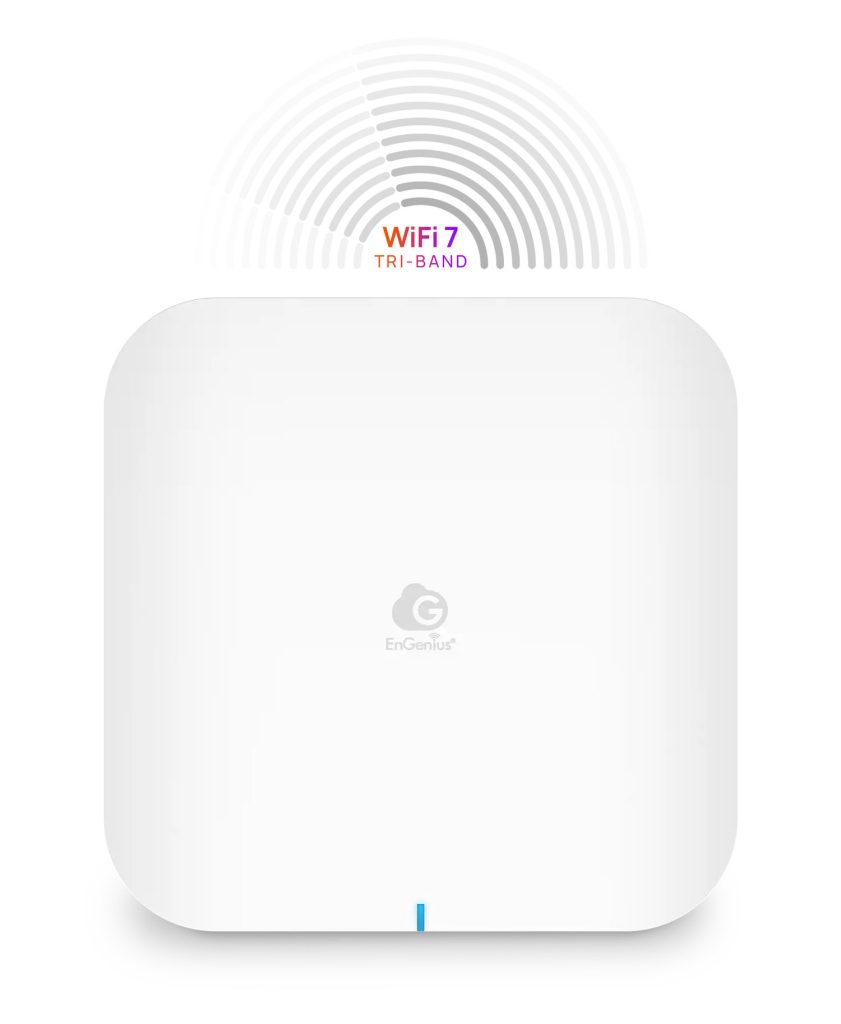
EnGenius is here to help you through the next stage of Wi-Fi.
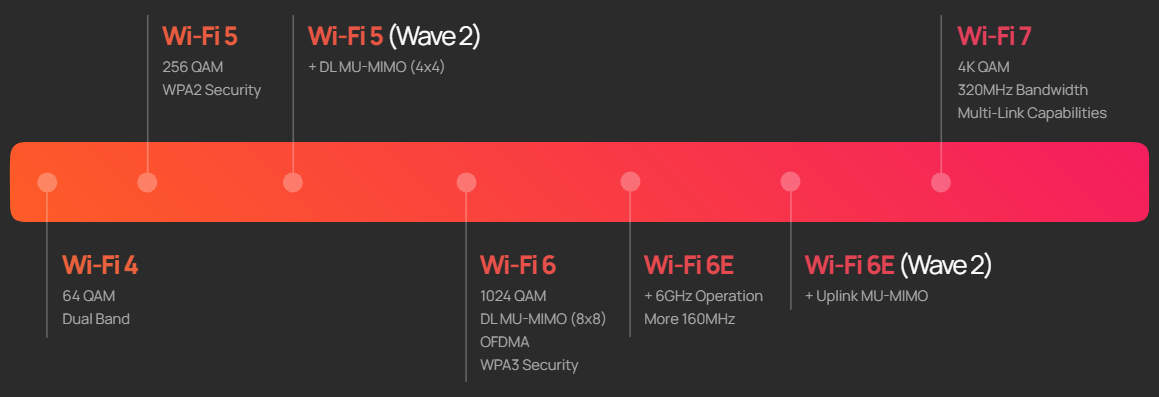
Most of us use Wi-Fi in our everyday lives.
Whether for work, school, or entertainment, we rely on this technology to stay informed and productive. You may or may not already know that we are currently on Wi-Fi 6E and are getting ready for the next stage in Wi-Fi: Wi-Fi 7. EnGenius has been helping consumers and businesses with their Wi-Fi needs to help them take advantage of the evolution of Wi-Fi. No need to check what Wi-Fi you are currently on; we will help explain what Wi-Fi 7 is, how it works, what it will offer and how it will affect you.
So, what is WiFi 7?
WiFi 7 is the upcoming Wi-Fi standard set by the Institute of Electrical and Electronics Engineers (IEEE). It will work across all three wireless bands (2.4 GHz, 5 GHz, and 6 GHz) and will be differentiated from its previous WiFi 6 predecessor by making a performance gain for consumers by having extreme speed and low latency. What that means to you is that you can take advantage of 8k video streaming, experience Virtual Reality (VR) or extended reality (XR), and utilize multi and simultaneous video conferencing. The use cases for consumers and businesses will explode as we explore what else we can do with our devices with WiFi 7.
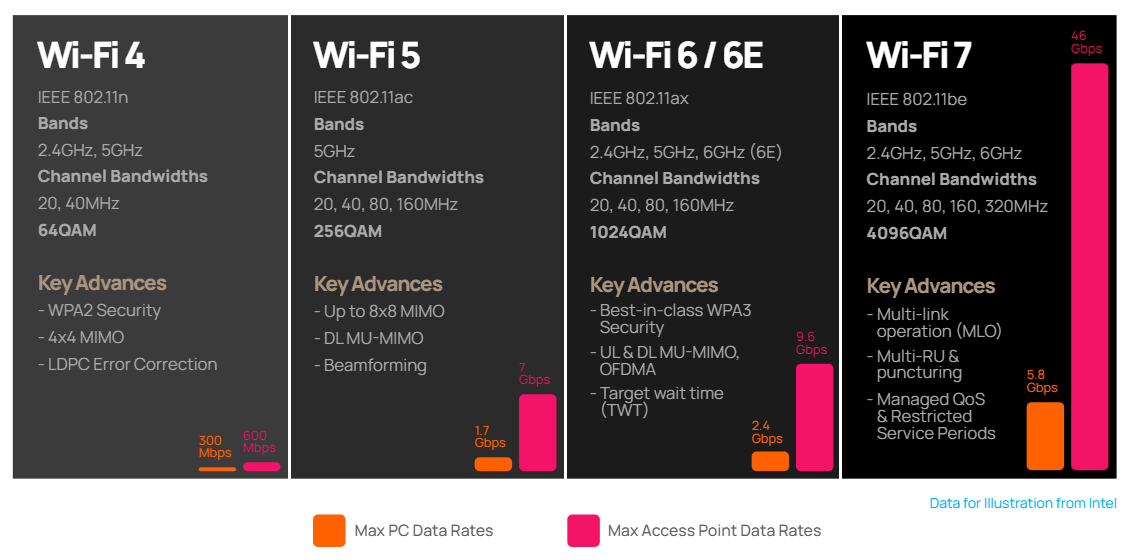
4kQAM
WiFi 7 will enable faster speeds by standardizing an advanced modulation schema called 4k QAM (Quadrature Amplitude Modulation), which empowers each signal to carry 12 bits instead of 10 bits (20% increase). 4k QAM will pack more data in each signal, which will help increase throughput and capacity compared to WiFi systems using 1k QAM.
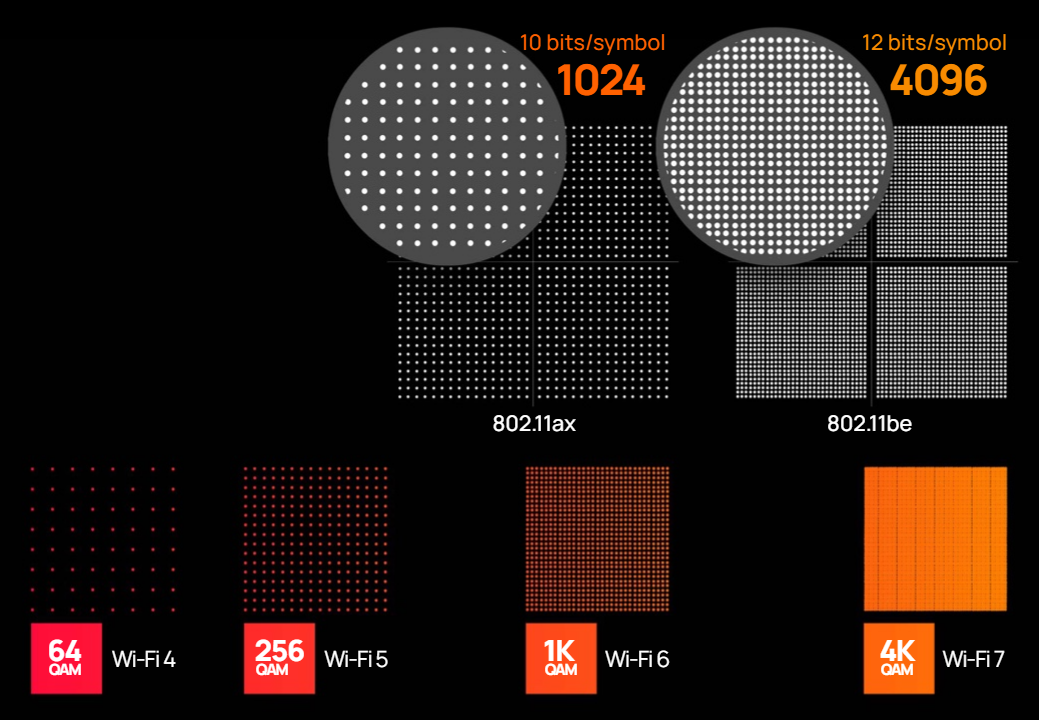
WiFi 7 Channels
Each channel on WiFi 7 will be 320 MHz, double the previous WiFi generations. In short, the new modulation will allow for greatly denser data packets to travel on wider channels. That means a WiFi 7 device will have a potential maximum data rate speed double that of any WiFi6/6E device. You’ll be able to watch 4k and 8k videos, play online games without lag, download large files in seconds, and much more.
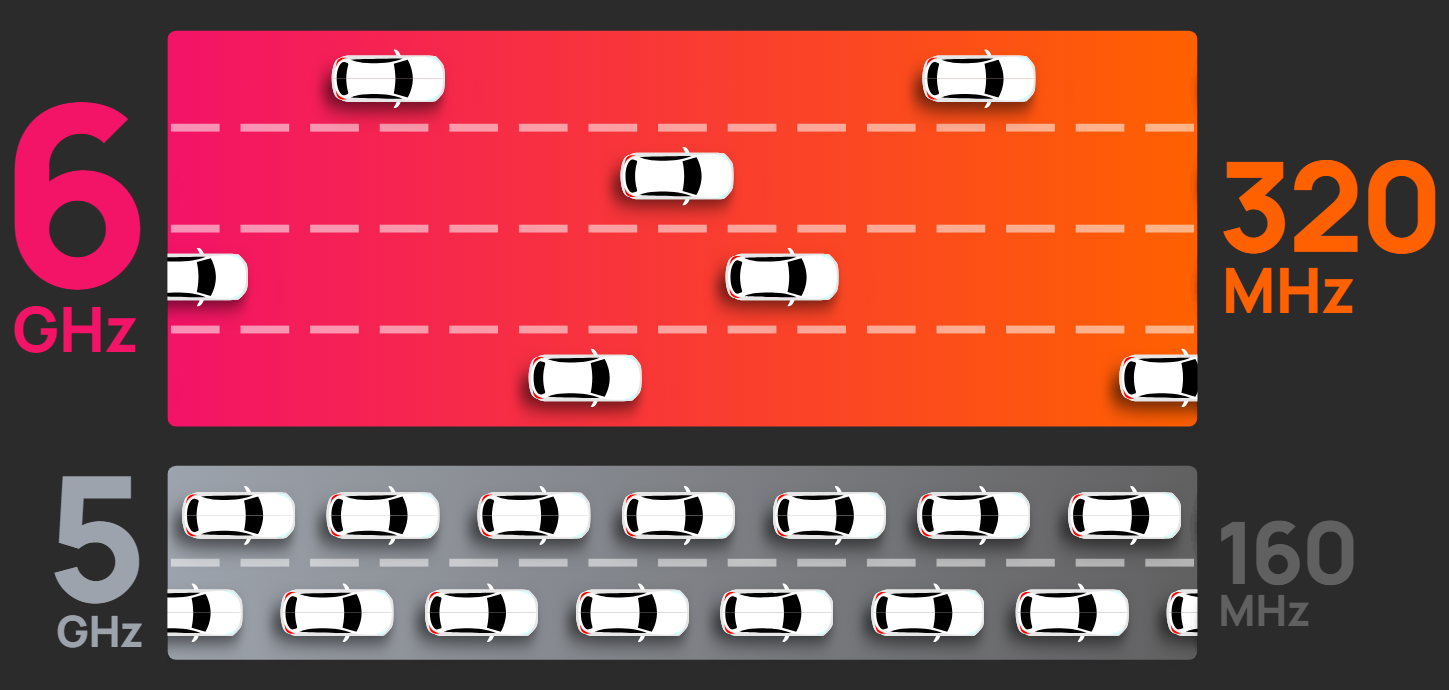
Multi-link Operation and Latency
Today’s Wi-Fi devices provide access to multiple wireless bands, discussed earlier, but typically only use a single link to transmit data, only switching to another if conditions change. Wi-Fi 7 will introduce multi-link operation (MLO) options that allow devices to connect simultaneously on two bands, leading to increased throughput, reduced latency, and increased reliability. This means that your data will now have more bands to travel on and create quicker connections even in congested areas or share the same redundant data to ensure that it arrives in case the other fails. MLO is excellent for emerging technologies like cloud computing, online gaming, VR/AR, and video streaming.DeviceDeviceSingle 2x2 RadioConcurrent Dual RadioorAccess PointAccess PointConcurrent Dual RadioConcurrent Dual Radio

Multi-RU
With legacy Wi-Fi, each user can only send or receie data on an assigned resource unit (RU), meaning that if another user uses any part of a large high-speed channel, the entire channel is unavailable. This leads to significant limits on the flexibility of the spectrum resource scheduling. With multi-RU puncturing, Wi-Fi 7 devices will be allowed to use other parts of the same high-speed channel that are not in use, allowing single users to combine RUs to increase transmission efficiency. This flexibility will help alleviate congested networks and bands and enable users to take advantage fo all the resources available in the network.
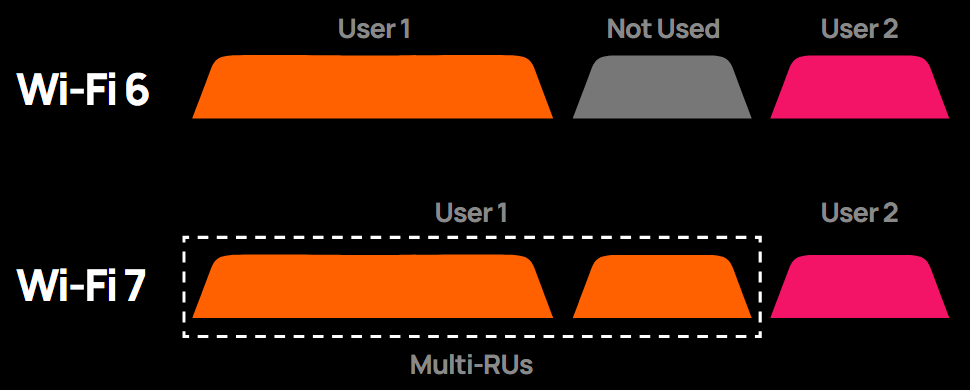
ECW536
Cloud Managed 4x4x4 Indoor Tri-Band WiFi 7 Access Point
Tri-band wireless access point reaching speeds of 11,529 Mbps on 6GHz, 5,764 Mbps on 5GHz, and 1,376 Mbps on 2.4GHz
- Wi-Fi 7 Tri-band, 2.4GHz, 5 GHz, and 6 GHz supports 18.7 Gbps aggregate speeds
- Ultra-wide 320 MHz channels in 6 GHz to deliver extreme throughput gains
- 4x4x4 integrated omni-directional antenna design for greater coverage area
- 4 MU-MIMO spatial streams to ensure premium performance in high density environments
- 4096-QAM advanced modulation packs more data for throughput and capacity
- Multi-Link Operation (MLO) increases throughput and reliability utilizing multiple bands
- Multi-RU puncturing avoids interference, increases throughput, and reduces latency
Use Cases & Applications
Wi-Fi 7 will impact both everyday consumers and enterprises big and small across the globe. With its increased capacity and speeds and all the benefits that Wi-Fi 7 will bring, let’s explore the applications of Wi-Fi 7.
Business Impact
Running a business and being productive at work has become more reliant on communication across time zones and borders. With remote work and global workforces and partnerships, we rely on networking technologies to help us run our businesses. The pain of having out-of-synch documents, video meetings with disruptive lag times, and dealing with congested networks at home and in the office will be a thing of the past. Wi-Fi 7 will be vital to experiencing smoother and more reliable experiences online, especially with more business adoption of cloud applications and infrastructure. The next stage in Wi-Fi will stop slowing down your business and open doors to what you can do for your customers.
Consumer entertainment
With so much entertainment to stream and interact with, and more to come with immersive technologies in AR/VR (is the metaverse still happening?), you don’t want to be waiting for videos to buffer, have delays during a game, or have to watch in lower quality rates. With Wi-Fi 7, you and your family and friends can enjoy games and videos in 4k/8k simultaneously.

